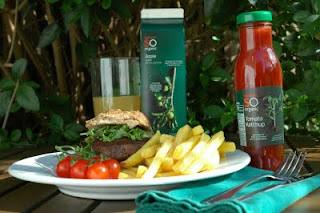
Tetra Pak, multi billion pound maker of drinks cartons, has just published a review of the UK liquid milk market, setting out where growth opportunities might lie.
The company estimates the total market, retail and catering together, to be around 6 billion litres, with sales down 1% year on year. Growth in retail sales is partly offsetting a decline in catering. (For comparison, DairyCo’s latest numbers for retail show the market to total 5 billion litres, up 0.4%).
According to Tetra Pak, functional products with added health benefits are the biggest growth opportunity. They point out that products like Unilever’s Flora Pro Activ which promises lower cholesterol, and Lactofree from Arla are growing strongly, and increasing health consciousness will drive growth still further. This has apparently happened in America where products with added health benefits are booming.
Whilst Tetra Pak are correct to say that keeping healthy is a worry in the UK, launching successful products will not be easy. Health benefits do not trump a poor tasting product, so much research and development will be needed to ensure that the products not only deliver their claims but also taste great, and vast marketing budgets are needed to explain a benefit to a public generally mistrustful of anything which smacks of being modified.
A more straight-forward opportunity identified by Tetra Pak lies in the flavoured milks market, where, helped by the launch of exotic varieties, the market has grown to 200 million litres in 2009. An EU ruling that subsidies for milk now apply to secondary as well as primary schools may encourage teenage consumption. And at the youngest end of the age scale, Tetra Pak has noted a rise in sales of baby and toddler milks.
One of the quirkier facts in the review is that goat’s milk is the fastest growing sector of all.
And so to brands and innovation. The Tetra Pak review shows that the share of branded milks has grown to over 20%. EU regulations whereby milks of varying fat levels can be labelled as milk, rather than milk drink, allowed a new sector to emerge, led by Wiseman’s “The One %". Cravendale filtered milk from Arla with its longer shelf life has been a shining example of innovation. The product is sold at a premium and the sector has come from nowhere to be now worth £229million. Lactofree is another branded success. All demonstrate that premiums and innovation are possible even in a so called commodity market.
Anders Olsson of Tetra Pak reckons that more creative thinking and better consumer understanding would lead to a more dynamic milk market. He says that “The current state of mind is auto-pilot”. It may sound harsh but he has a point. Liquid milk is a huge but static market, and there is a crying need for innovation to reduce dependence on sales of low margin standard milk to major retailers, to get the value of milk sales up, and to return some of the higher value margin to milk producers.
Notes from DairyCo’s consumer sales audit for the 12 months to 1st November 2009
- the liquid milk market is up 0.4% in volume and 6.7% in value
- filtered milks grew by 10%
- organic milk sales are down 2%
- Jersey and Guernsey are doing well off a small base, up 13%
- UHT milk is down 2%, but a new sector, sterilised milk, is growing rapidly albeit is still very small. DairyCo thinks this is because it offers a longer shelf life.
- soya milk sales are down 5%




















